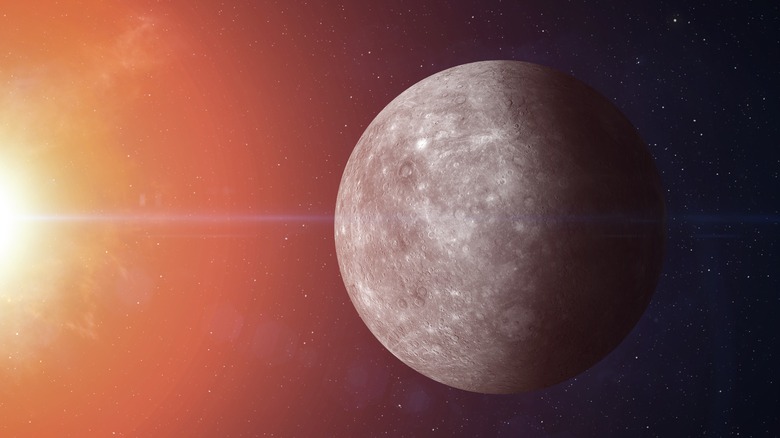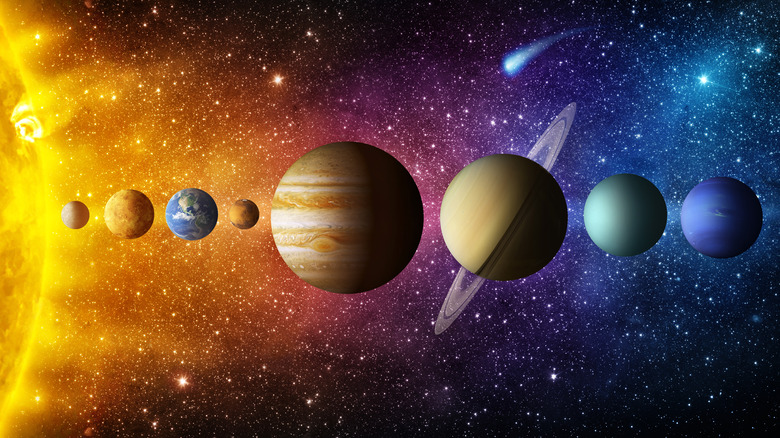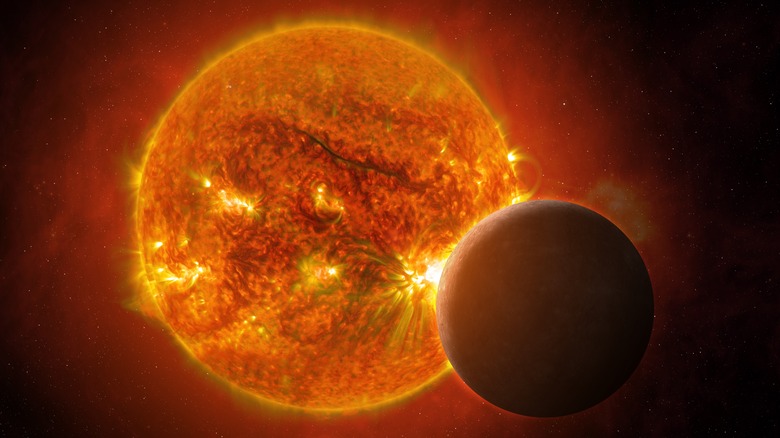The Real Reason Why Mercury Has No Moons
Being the closest planet to the Sun gives Mercury a certain mystique, and its composition is as intriguing as you might expect from its unique positioning. Per NASA, its perilous atmosphere is composed of a blend of sodium, helium, potassium, oxygen and hydrogen. Though its surface is solid and rocky (unlike some gas giants elsewhere in the solar system), this so-called exosphere is absolutely not breathable.
Mercury, as the space agency tells us, is also the smallest of the eight planets (poor Pluto no longer qualifying, technically), and boasts a crater-laden landscape that calls to mind another iconic resident of the solar system: Earth's very own moon.
The lonely Mercury, however, doesn't have any moons of its own. It's not alone with this unique characteristic — Venus doesn't have a single one either, per World Atlas. In point of fact, non-planet Pluto has eight moons to call its own, says NASA. So why not Mercury?
The many moons of the solar system
Per Astronomy, the planets of the solar system acquired their moons in different circumstances. The solitary moon of Earth is believed to have resulted, according to the magazine, when another body struck the planet. The force of such an impact would have split small pieces from the whole, which then would have come together to form Neil Armstrong's famous stomping ground.
Further out in the reaches of the solar system, meanwhile, the outlet states that "Jupiter, Saturn, Uranus, and Neptune ... form[ed] like solar systems in miniature." Further away from the formidable gravity of the sun, chilly fragments of dusty gas and ice formed these vast planets, and it's believed that the remainders became multiple moons. Per USA Today, Saturn has the most moons in the solar system: 82, though 29 of them are dubbed provisional moons prior to further study.
Mercury, for its part, is deemed a terrestrial planet, meaning that it boasts a solid surface characteristic of those worlds closer to the sun. It seems to lack any moons because of its sheer proximity to that most famous of stars.
The gravity of the situation
According to NASA, Mercury is around 41 million miles (approximately 66 million kilometers) from the sun. This is a mind-boggling distance, but in space terms, they're next-door neighbors. Naturally, this means that the enormously hot and enormously dense star has an incredible amount of influence over, and effect on, Mercury.
Being only slightly larger than Earth's moon, the gravity of Mercury is relatively low. As a result of this and the sun's own gravity, according to World Atlas, the teeny planet (which is around the size of the continental United States, per Space.com, with a diameter of 4,878 km or 3,030 miles) would not be able to keep a grip on any moons that happened to develop. The sun would interrupt and prevent their orbit.
World Atlas goes on to state that Venus, which also has no moons, is a slightly different case. At four-fifths of Earth's size, it would ordinarily be able to keep any moons in orbit. That website states that Venus is believed to have had a moon at some point in the solar system's long existence. However, it's much closer to that pesky life-giving sun than we are, and so any potential moons would reportedly be drawn away.


